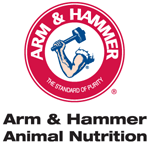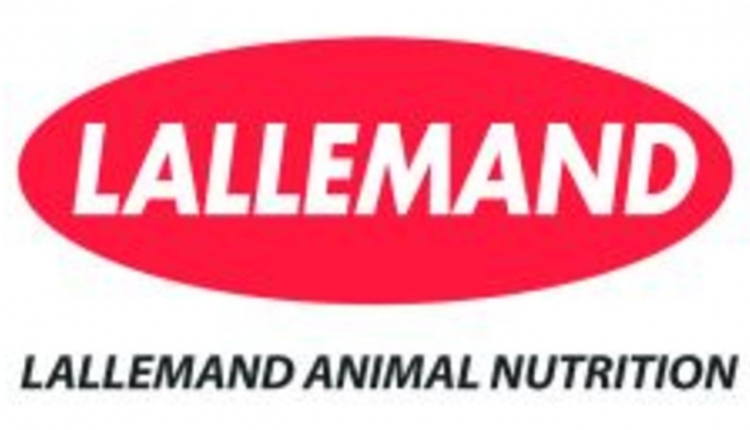The first rumen-protected bypass fatty acid source remains the gold standard
for high-quality, research-proven feed ingredients

Arm & Hammer Animal Nutrition proudly celebrates the 30th anniversary of MEGALAC®, the industry's first, and most consistent source of rumen-protected bypass fatty acids.
"MEGALAC and the concept of rumen bypass fatty acids have changed how we feed dairy cattle," says Elliot Block, research fellow, Arm & Hammer Animal Nutrition.
"In 1986 MEGALAC became the first commercialized protected bypass fatty acid source in the United States, enabling livestock nutritionists and producers a better means to ensure energy reached the small intestine for the animal's use, optimizing animal productivity," he explains. "Thirty years later, it remains the gold standard as the most reliable, consistent bypass fatty acid to deliver the energy needed to meet the energy requirements of the high-producing dairy cow."
MEGALAC helps enhance herd productivity by delivering rumen bypass fatty acids to the small intestine. This provides the extra energy cows need to efficiently achieve peak production levels. Supplemental fatty acids support milk production, help cows retain body condition and improve reproductive performance. Plus, fats contain 2.25 times more energy than starches and digestible fiber-in feeding, the net energy for production ratio is nearer 2.7:1. MEGALAC is the only bypass fat with a USDA measured Net Energy for Lactation (NEL) value, 2.96 Mcal/lb.1
MEGALAC's initial development in the 1980s was the result of a series of scientific events.
"We were brainstorming-along with Dr. Bill Chalupa at the University of Pennsylvania's School of Veterinary Medicine-about various ways to create rumen protection for long-chain fatty acids and searching for sources of rumen protected fatty acids," says Dr. Kenneth Cummings, former director of animal research and technical service for Arm & Hammer Animal Nutrition.
Cummings had been tasked with finding complementary dairy nutrition products for ARM & HAMMER Sodium Bicarbonate. "We knew that fat might be beneficial to dairy cows and set out to find ways to develop a protective coating around the fatty acids so that they would be able to bypass one part of the digestive system and release in another part," he explains.
To this end, Cummings had been in contact with university researchers, as well as private companies like Volac in the United Kingdom, who were working on various fat-feeding nutrition theories and early product development. Although the concept had been studied since the 1970s, practical ways to deliver rumen inert fatty acids had yet to be commercialized.
Meanwhile, Dr. Don Palmquist, dairy nutrition professor emeritus, the Ohio Agricultural Research and Development Center, Wooster, Ohio (now Professor Emeritus), was also studying how to boost a cow's energy needs while overcoming the challenge supplemental fatty acid feeding posed to rumen digestion. His research led to collaborations that eventually created MEGALAC.
"A patented commercial product was not something we were specifically looking for," recalls Palmquist, who was studying interactions of calcium, fatty acids and fiber digestion as a way to boost a cow's energy needs while overcoming the challenge supplemental fat feeding posed to rumen fermentation.
The rest, as they say, is history. "MEGALAC rumen bypass fat" was developed by Volac using the process developed by Dr. Palmquist. The product was licensed to Church & Dwight Company by Volac in 1985 and was commercialized in the United States in 1986. ARM & HAMMER constructed a manufacturing facility in Old Fort, Ohio that came online in 1987. Today there is a second facility in Madera, California.
"Research trial after research trial has solidified MEGALAC's role in helping dairy producers achieve greater animal performance and productivity," says Block.
More than 54 published research studies conclude that MEGALAC:
- Delivers consistent, optimum energy levels
- Jump-starts feed efficiency
- Boosts milk production
Plus, MEGALAC is more than 85 percent digestible in the small intestine when included in the diet at 3 percent of ration dry matter.2 The bypass properties and larger particle size of MEGALAC make it easier to reach and be absorbed in the small intestine.
"For 30 years MEGALAC has been the leader in bypass fat performance and reliability," says Block. "We're looking forwarding to delivering these same impressive results to our dairy producer and nutritionist partners for the next 30 years."
To learn more, visit www.ahanimalnutrition.com.
7.19.2016








